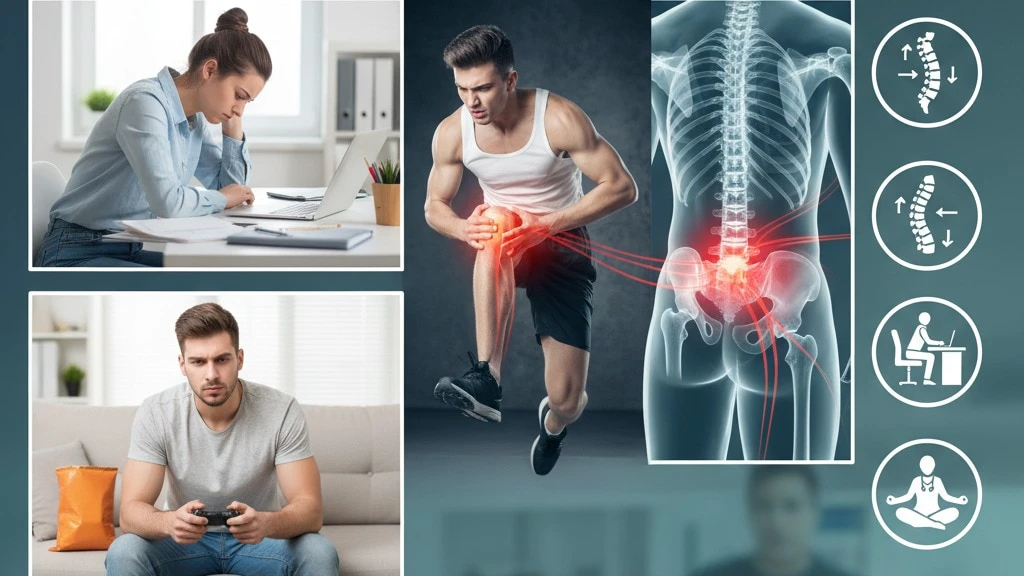Historically, knee pain and back pain were largely for older adults. But insurance claims for back pain and knee pain show clearly that doctors, physical therapists, and insurers have all been noting an uptick in patients within their 20’s and 30’s.
The question remains: why is this happening to this generation at this stage in their life?
Sedentary lifestyle, and less movement, one of the top culprits is modern lifestyle. Young adults are more sedentary than ever. A typical day may involve sitting at the office or during their commute or going home to study. We humans are meant to move! When people sit for long periods, or are active while sitting (e.g., fidgeting), they weaken muscles, decrease flexibility, and impose additional stress on the spine. Further, without movement and activity at the joints (especially at the knees), the muscles around needed for stability and strength become deconditioned.
“Technology and Poor Posture – Furthermore, the increased use of smartphones and laptops, has entered our lives and brought with it the “tech neck” and “screen slouch,” which in simple terms means leaning forward for hours on end, causing strain to the back and neck muscles. Over time poor posture creates persistent pain like neck and back pain,” says Dr Pankaj Walecha, Director & Head, Robotic Knee & Minimally Invasive Hip Replacement.
EXCESS WEIGHT AND POOR LIFESTYLE
Dr Walecha also shares that due to diet and lifestyle changes, rates of obesity have increased among our younger population. Even a small increase in body weight can place added stress on the knees and spinal column. When combined with irregular sleep, stress, and lack of exercise, this combination is a formula for long term pain and fatigue.
INJURIES RESULTING FROM SPORTS AND FITNESS
Dr says, ironically, our increasingly fitness focused culture in society is also adding to these problems. Many of our young adults have started gym workouts or sports and exercise today without enough guidance. Sudden high intensity training, heavy weights, use of improper techniques may damage the muscles and joints, and worse the knees and lower back. Training without sufficient warmup, stretching and rest, increases the chance of injury.
PSYCHOLOGICAL STRESS CONTRIBUTING TO PAIN
“Mental health also plays a part here. Stress and anxiety create muscle tension, which contributes to pain, particularly back and neck pain. This can be very painful over time. Young adults balancing careers, studies, and family responsibilities have a lot of tension that they carry with them in their daily routine,” says Dr Walecha.
WHAT CAN WE DO?
Dr also added that the good news is that almost all instances of early knee pain and low back pain can be avoided. A few simple lifestyle changes can lead to significant improvement: get up and walk and stretch when you have been sitting for long periods of time in the workplace.
Knee and back pain are not solely age-related problems anymore. Due to changes in lifestyle habits, increasing use of technology, and heightened stress, more young adults are experiencing these symptoms at younger ages. With awareness and preventative care, protecting your joints and spine will help develop the younger generation to live a pain-free and active life.
